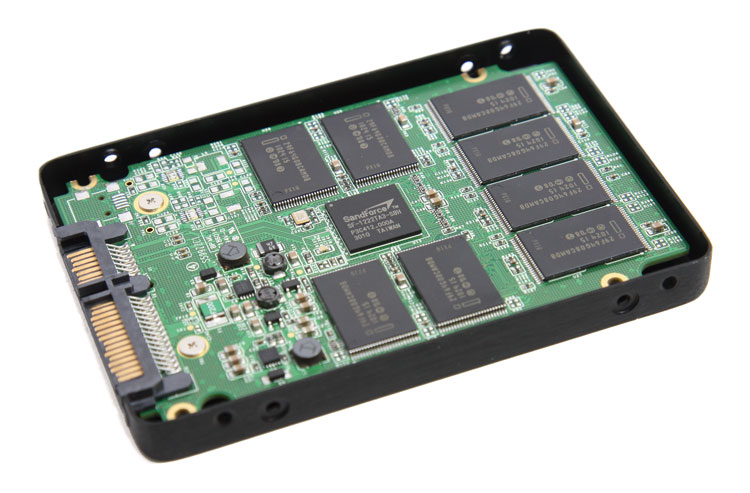Zalman N Series SATA II 2.5" SSD
Zalman N Series SATA II 2.5" SSD
Zalman recently started to introduce new SSDs based on SandForce controllers into the market, we expect good availability starting April 2011. The performance of this all new N series SandForce 1200 based SSD is advertised at 280/270MB/Sec (Read/Write). This SSD series initially became available in 64GB and 128GB volume storage sizes due to large data-compression partitions, upcoming TBA models will include 40GB and 256GB volume sizes as well.
Check out the features
- N series 64/128GB
- WIndows 7 TRIM support
- Seek Time: .1ms
- Slim 2.5" Design
- 99.8 x 69.63 x 9.3mm
- Operating Temp: 0°C ~ 70°C
- Storage Temp: -45°C ~ +85°C
- Low Power Consumption: 2W in operation,
.5W in standby - Max Read: up to 280MB/s
- Max Write: up to 270MB/s
- Sustained Write: up to 200MB/s
The SSD utilizes SandForce's SATA II version of the SF-1200 controller, which is adopted by other players in the market as well, e.g. Corsair, GSKILL, ADATA and OCZ. The controller adds support for newer NAND memory types as in 32nm and 25nm memory. New 25nm NAND Flash memory is cheaper to manufacture, thus cheaper for companies to implement, and for you as a consumer cheaper to purchase.
The read and write speeds for the tested model are advertised at a blazing 280 MB/sec read and 270MB/sec write performance (measured with ATTO test software), which makes the product position itself in the extreme high-end SSD segment. Good performance but at a price alright.
Now normally we see the competitive Indilinx Barefoot controller paired with 64MB of Elpida cache memory in the latest SSDs. SandForce however does not need that cache memory. Sandforce uses a complex real-time data compression, saving on cache needs. Enabling it to write random I/O extremely fast, instead it hogs some of the NAND FLASH memory to use as cache. To manage all the multi-channel controller loving embedded into the controller we see a tiny processor inside the controller, and next to it a small NAND memory cache.
Why is that a so important to that random I/O you ask. Well, history tought us the hard way that most budget SSDs had a 1st generation JMicron controller with very little cache (8KB / 16KB), and the issue there is that if they need to write a lot of really small files simultaneously these drives start to choke up every now and then, your a-typical data bottleneck within a storage unit. Large data-caches solve that issue very well.
JMicron now has gotten a bit of a bad reputation in the SSD market because its controllers suffered from that bottleneck issue due to lacking caches, but the new JMF612 incorporates 128MB of DDR2 cache for stuffer-free performance.
So a big help totally bypassing the small files issue for SSD drives is using a nice big mamma SDRAM buffer, or the approach that SandForce takes should be more than sufficient as well. Let's strip the product down though.

In the above photo we see the SSD. The is paired with (MLC) flash memory chips. Including a count on the backside we spot 16 chips in total. As stated a chunk of the NAND Flash memory is reserved for drive wearing and data compression, hence the somewhat weird final SSD size, after a format you'll have a 111GB partition, out of the 128GB advertised.
To the middle you can spot the SandForce SF1200 controller chip. Everything combined form the heart and soul of the SSD.
We have stated it many times and explained this quite a bit, but the seek time on SSD drives are insane; nothing short of amazing, at less than 1ms -- 0.1ms as we actually can measure. The average seek time for a traditional HDD is roughly 9ms. Do the math, hey, no more moving and spinning mechanical components is the key here.
The traditional HDD is a limiting factor on the overall PC experience. Also, storage performance like this will, for example, greatly enhance load times of Photoshop, Generic applications, Office, games load times and even simple stuff like browsing the web will become a much faster experience.
One small note before moving on, you'll receive a three year warranty on the product, which we feel is quite good.
